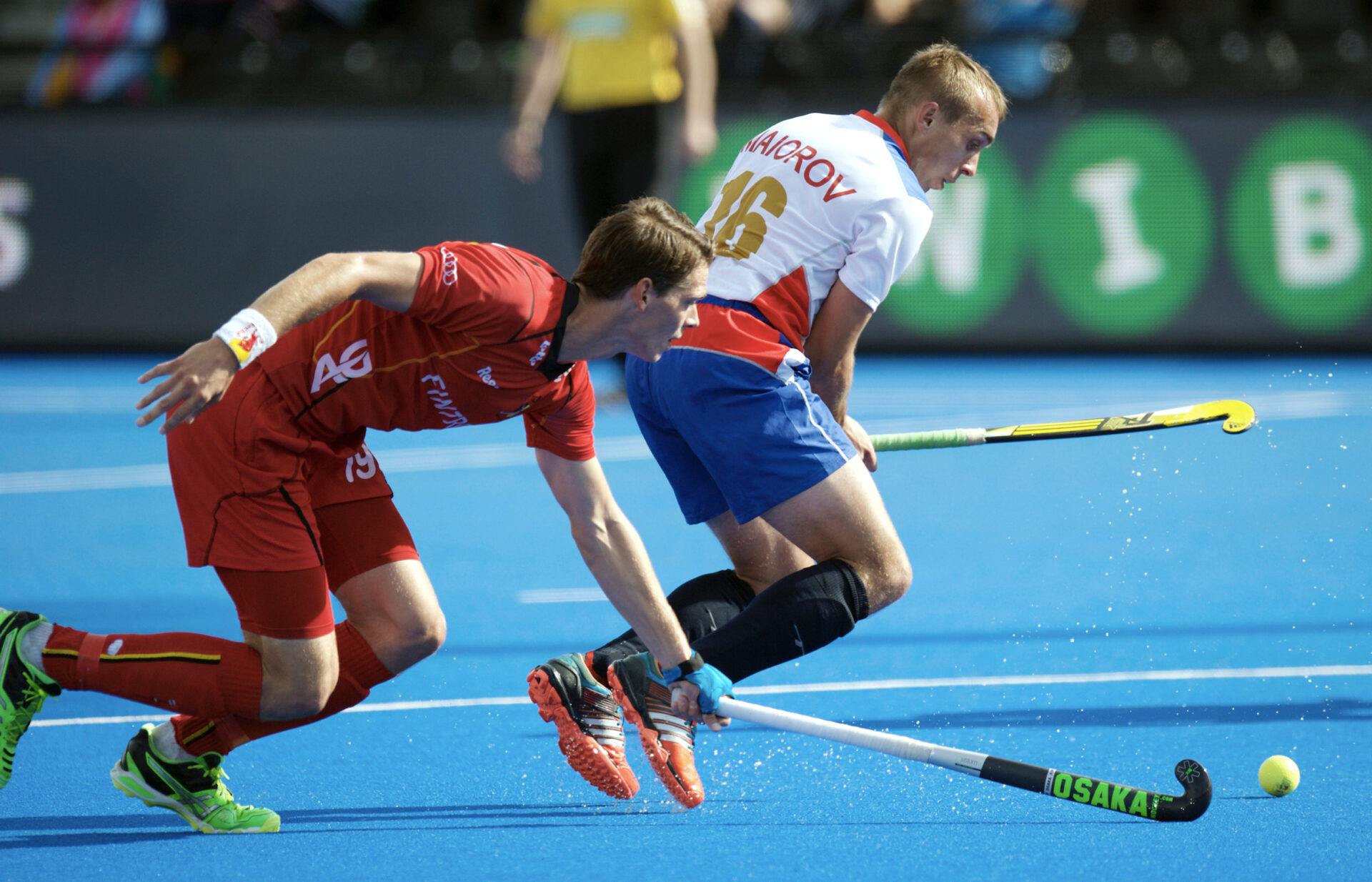GB Olympian John Shaw says his fears over the backhand/reverse at junior level continue to mount as a leading coach
We know when we play hockey that we play a quick, skilful and exciting game. We also compete in a game that has danger running through it.
Short corners have become a set piece where we allow defenders to put on several pieces of equipment to protect themselves from danger.
Meanwhile, the reverse hit has challenged me massively as a coach. It is exciting to watch the backhand mastered well and also frightening to see it done in a packed D where the player hits it without any regard for the opposition.
Some players have an idea of where it’s going but a lot invariably don’t. I suggest the majority.
So why am I highlighting the issue once more?
It comes from a recognition that at the top level, skills are honed with practice that occurs often. However, most hockey is not top level.
We have rules that are identical from juniors to international. The awareness and competence levels are so different when it comes to defending and attacking in these two parts of the game, while juniors put themselves in very dangerous positions (although they are learning).
Recently, I saw an under-13 girl hit a reverse stick shot just under the crossbar against an opposition that didn’t even see it. It was hit very hard.
I saw it from behind as I was umpiring at the far end. The girls defending did not move as it shot past their heads.
We have already had some very nasty injuries and also deaths in recent years. I feel it’s time to react once again and I ask our governing body to take some genuine responsibility.





Wise words John. I would agree with some kind of a ban on reverse shots at junior ages – a bit like rugby which gradually introduces different (with increasing levels of injury risk) up through the age groups.
Only way to move forward with this is to ban reverse strike in D, where the face of the stick is upward. Around the pitch as an open reverse pass, ok.
I agree, ban reverse shots in the d, often no idea where it is going, or miss and follow through, needs more time to practise and hone skills , it has been the go to shot at the expense of an all round game
Having played with John Shaw many years ago and witnessed his talent first hand, I have to agree with him. The reverse stick hit at best is undoubtedly skilful, but at worst == doesn’t bear thinking about. Will the ball stay on the ground or fly upwards into an opponent depends on the quality of the player. Would a Junior’s serious injury be the catalyst ?? Let’s hope not.
As a junior coach I full agree with some form of regulation regarding this shot in the D. Generally at a high level of hockey both the attackers and importantly the defenders are aware of the action and outcomes of the skill.
Juniors whether attacking or defending are still learning and not necessarily fully spatially aware enough to react to the situation.
Are there any statistics to prove that reverse stick shots result in more injuries than open stick?
Why not just legalise face masks a la Sam Ward throughout the game and get on with it. Flying sticks, flying balls are a feature of hockey whether reverse pass or not. How are you going to get better at something if you’re not allowed to do it.?
I agree with John Shaw I’ve seen a few near misses at all levels with the reverse shot in the D, however at senior level people defending are more aware of the risks and can act to minimise getting hurt. At junior level this isn’t the case and I’ve seen some things that concerned me, we should take a lesson from rugby in this.
It’s not just juniors that are at risk, in fact I would suggest lower league defenders are in just as much danger. What is worse is the poor understanding of the rules. If an umpire blows a dangerous lift in the D, the attackers go mad. It’s a shot, it’s a shot. Despite it being dangerous and in a lot of times wide of target. Forwards believe a shot can always be lifted!
As an athlete who plays in the English premier league I completely understand.
However the problem I face with banning it at junior level is there is still a vast level of ability within the ranks. At beeston we have individuals under the age of 18 and even under 16 playing in national league games week in week out. Yet there are players who are only just picking up a stick for the first time at u16 level.
This is where the problems are with the argument about banning it outright because you would hinder the learning of the more advanced juniors by banning it outright. It would also create unrealistic hockey in the sense that the way you would defend knowing a player has to turn strong could put a defender in more risk if they carry over there skills into adult hockey.
Therefore I understand there is a risk and for juniors it is a greater risk but I’d argue no more than having a 13 year old playing there first game of adult hockey against men and women.
Agree entirely. Plus how many reverse stick hits are actually legit. Umpired at the weekend and being honest I could have blown many more then I did for hitting the back and not the side of the stick.
Surely the front is the front, the rest, back and side are illegal ?
The reverse is legal but a similar shot on the forehand is classed as dangerous. Both shots shot be deemed as a chip shot and be declared dangerous.
What’s the difference between a reverse stick shot and a open stick shot, they can both be dangerous and can both go head height….may as well change the rules to no hitting in the D if they’re contemplating banning the reverse. That being said, a reverse much harder to control but even an open stick shot can be miss-controlled.
Reverse stick is more danger then open stick shot.its high time to abolish it
The gods descended as warriors to play field hockey.
Its a tough skilful, and dangerous game,
and great to photograph, but I hate to see serious injuries.
I could not agree more. Having played national League, I can go as far as saying that most players at that level don’t know where it’s heading.
Let’s start a petition to only allow it for over 18s as a start.
I can’t agree with outlawing a skill. The problem is not that the back hand is inherently dangerous. The player that John mentions could equally have been hitting it on the forehand. Good players will do this. The problem is one of danger.
Mixing kids with great skill with lesser kids is partly to blame. Should we just say that players should only play at the right level (something akin to the NZ Rugby by weight approach). Should a Regional or National Junior be in a game with development players – now there’s a tough question.
Don’t get me wrong, like so many others, I see the range of players at different levels (from u6s to National League and International players) – and what is described clearly does happen. But it is not by any means the only dangerous part of the game.
The problem for me is two fold: officials are being asked to err on the side “play” rather than “danger”. Surely hitting the ball through a crowded D – even if you are in the circle is dangerous. If we are consistent in blowing the raised ball for danger, players will stop doing it. So for me it is about danger – and this requires umpire education (and I mean interpretation, not rule book testing – which is sadly lacking from our governing body right now). We want to see a fast and exciting game, but we also want one that is safe. Would it be fair to say that most of the serious injuries in the game are when the ball is raised too high (in all circumstances)?
The second part to me is that kids are not taught good technique and this means that the shot is not controlled – but kids favour the backhand as it carries more power and is easier to do. They take this lack of technique into later matches and as they get older. I know John coaches excellently and produces great players – so this is not a dig at him. But our coaching structure has de-valued technique and removed technique coaching from a lot of “modern” coaching.
I would add to the danger on the backhand though – the sweep tackle, which is uncontrolled and may not hit a head – but does lead to lower leg injuries and balls raising.
So if we are to look at danger – when we take a long hard look at penalty corners. Surely that is something that needs a new approach….
The reverse hit is a skill when played in a controlled way. Regret to say in many (most?) instances the control is not there, skill level and technique are poor and danger increases. This is at junior level and across most grass root senior level. Even at international level it can be spectacular and dangerous in equal measure.
At junior level it can be poorly coached both in terms of technique and when to use it. So many juniors take a crucial extra touch and extra second to flip the ball to their backhand for a shot at goal forsaking a clear goal scoring opportunity on their stronger forehand. Why? Because they think it looks better and is more skill-full. Result, they score fewer goals. If they have a good forehand goal scoring opportunity they showed use it.
Governing bodies do need to have a long think about the rules around using backhand hits (as well as other potentially dangerous play eg overhead shots) but for my mind the answer isn’t different rules at different levels of the game. Too many rule changes are geared towards the top league and international game but that is a very small proportion of hockey played. Rules need to work best at the proportionately greater grass root game. I personally would advocate banning the tomahawk, however, more governance needs to be in place as to when it can not be use eg where there is potential danger in a crowed D and advice to umpires should be to penalise it as such.
I think reverse stick should stay, but, stick rule should come in, That is stick should be no higher than your shoulder, it was an old rule, it gives you more control. Also mouth guards should be mandatory along with face masks at Short corners until the ball is clear from 25 yard area. One other should be shin guards as well should be mandatory. I go back to when I saw reverse
Stick by Danny an Australian could hit where he wanted and scored a lot of goals for our club.
The down side all young players tried it, and forgot they could use the open stick, so very seldom did we score goals, until I put a stop on reverse stick. This worked for a while, now back to
Normal when only 20% reverse stick score goals. But improvement will happen.
A lot of back stick play is occuring as a result of the stick being above the horizontal
I agree, as I took tremendous pride in my ability to defend especially on my back stick which would place your body in a little more danger but if timed well was effective, I believe with the rule to turn around over the ball combined with the back stick strike it’s become a lot more difficult to tackle a player, it definitely puts the tackler at more risk in general play as well, hockey has changed many rules over the years some for the absolute better some not so, I can remember the side line (hit) the under arm roll the ball back into play that was a bizarre one🤣